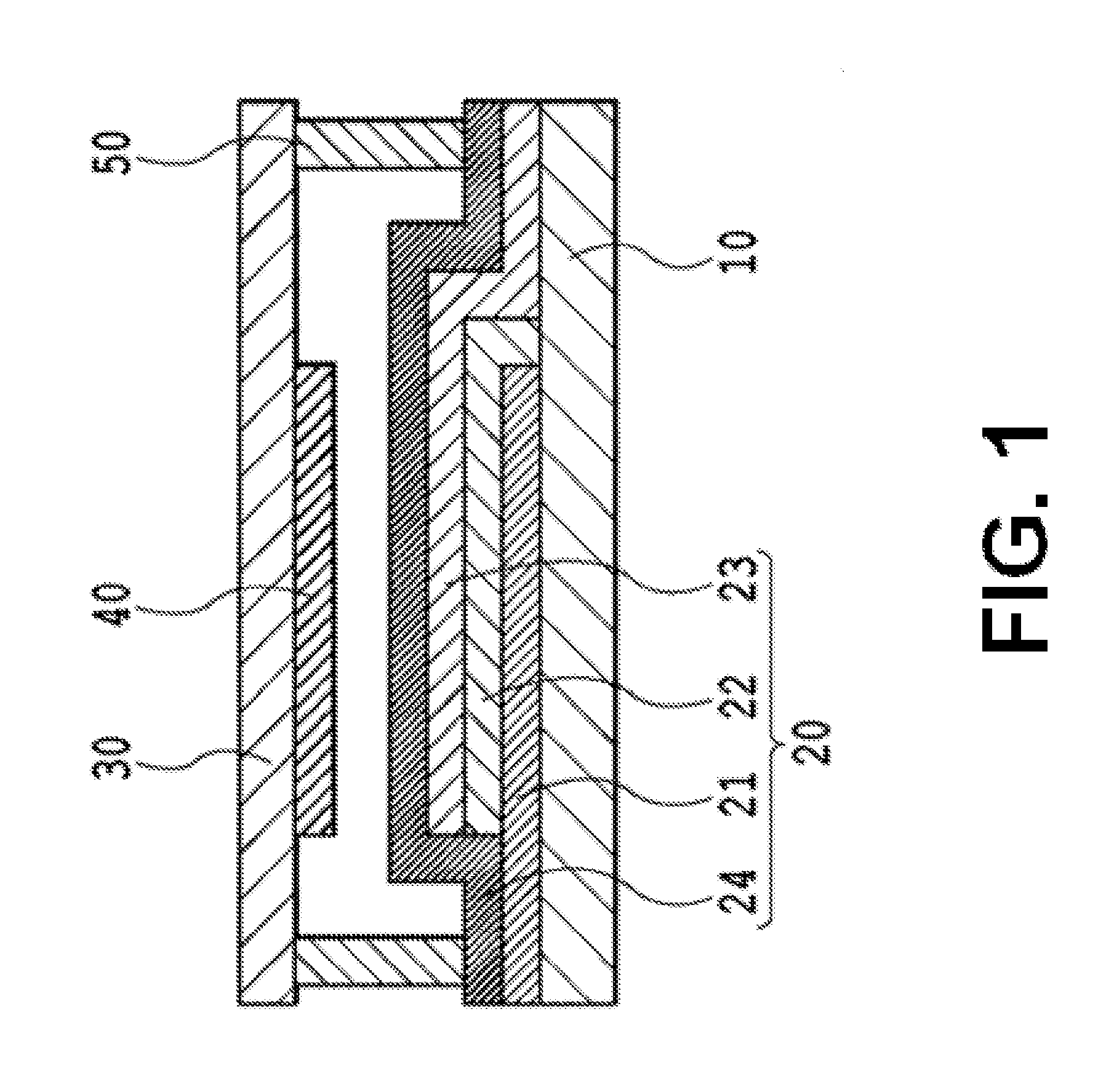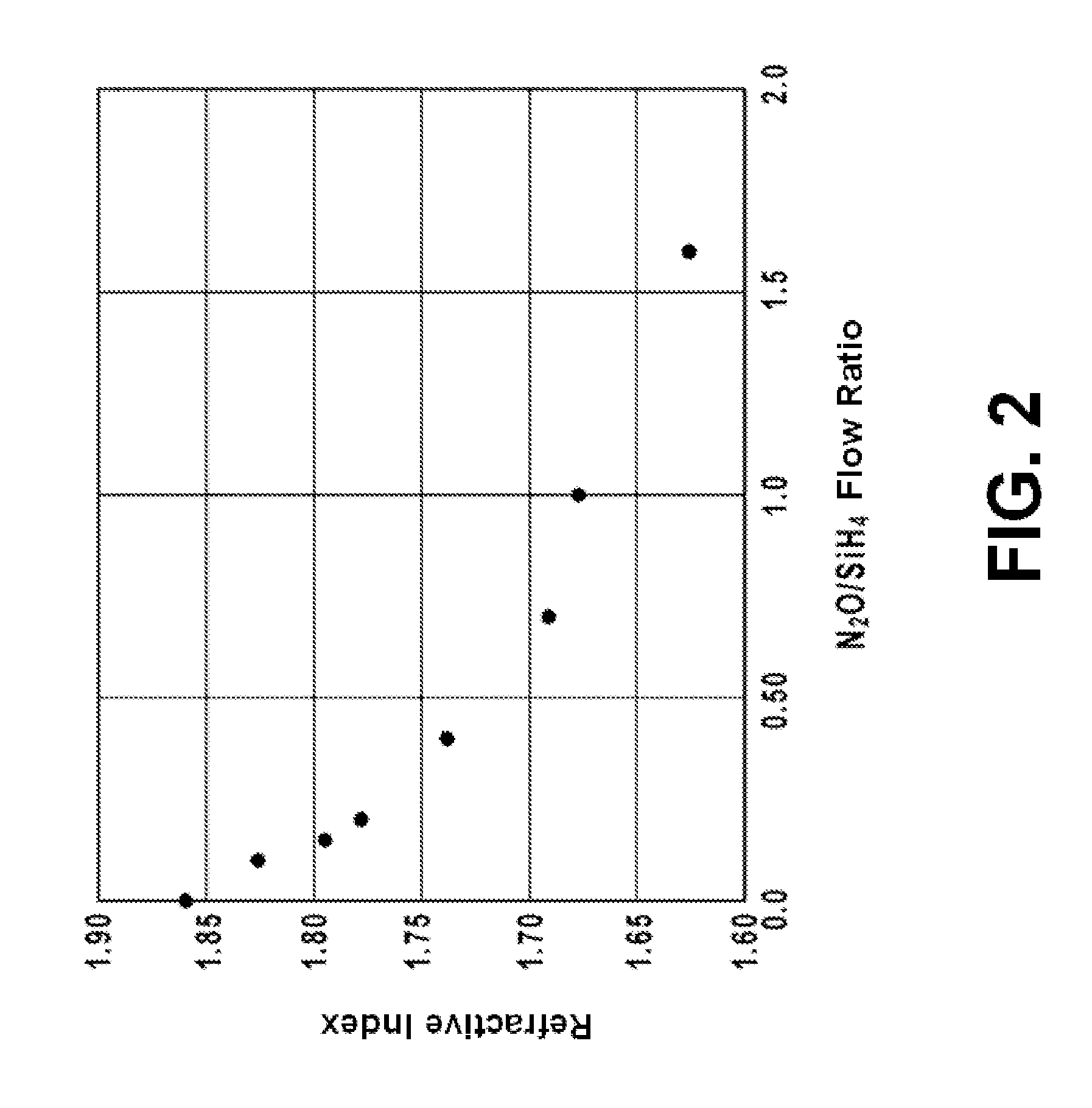Organic el device and method of manufacturing same
a technology of organic el and el glass, which is applied in the direction of thermoelectric devices, electroluminescent light sources, electric lighting sources, etc., can solve the problems of inability to apply film deposition methods developed as part of semiconductor processes to organic el devices, suffer marked degradation of light emission characteristics (current brightness characteristics), and achieve excellent light emission efficiency, and excellent moisture exclusion properties
- Summary
- Abstract
- Description
- Claims
- Application Information
AI Technical Summary
Benefits of technology
Problems solved by technology
Method used
Image
Examples
embodiment 1
[0096]In this embodiment, a red light-emitting organic EL device with 2×2 pixels, with pixels measuring 0.3 mm×0.3 mm, was fabricated.
[0097]As the substrate 10, fusion glass (Corning 1737 glass, 50×50×1.1 mm) was prepared. A sputtering method was used to deposit an Ag film of thickness 100 nm on the substrate 10. The Ag film thus obtained was patterned using photolithography to form lower electrodes 21 comprising two stripe-shape electrodes, of width 0.3 mm.
[0098]Next, the substrate 10 with the lower electrodes 21 formed was installed in a resistive-heating evaporation deposition device. Through evaporation deposition using a mask, a buffer layer comprising Li of film thickness 1.5 nm was formed on the lower electrodes 21. Then, evaporation deposition was used to form an organic EL layer 22 comprising four layers, which were an electron transport layer / light-emitting layer / hole transport layer / hole injection layer. The electron transport layer was Alq3 with a film thickness of 20 nm...
PUM
 Login to View More
Login to View More Abstract
Description
Claims
Application Information
 Login to View More
Login to View More - R&D
- Intellectual Property
- Life Sciences
- Materials
- Tech Scout
- Unparalleled Data Quality
- Higher Quality Content
- 60% Fewer Hallucinations
Browse by: Latest US Patents, China's latest patents, Technical Efficacy Thesaurus, Application Domain, Technology Topic, Popular Technical Reports.
© 2025 PatSnap. All rights reserved.Legal|Privacy policy|Modern Slavery Act Transparency Statement|Sitemap|About US| Contact US: help@patsnap.com



